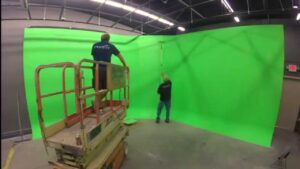Designing Home Server Racks with Professional AV Server Rack Design Software
The modern home has evolved beyond simple entertainment hubs. With the rise of smart technology, home automation, streaming, data backups, media servers, surveillance systems, and even personal cloud storage, the need for a home server rack is becoming more mainstream. Whether you’re a tech-savvy homeowner, a content creator, a gamer, or a remote worker managing multiple systems, organizing your equipment efficiently is crucial. This is where server rack design software plays a key role.
While the idea of server racks often evokes large enterprise setups, professional AV server rack design software now makes it accessible and feasible to plan and build a tailored rack system—right at home. Instead of relying on guesswork, DIY sketches, or makeshift solutions, homeowners can use powerful digital tools to visualize, calculate, and configure a server rack that balances performance, safety, scalability, and aesthetics.
In this blog, we’ll dive deep into the process of designing home server racks using server rack design software. We’ll explain how it helps in choosing the right components, ensures optimal cooling and cable management, avoids overloading, and prepares you for future expansion.
Why Home Server Racks Are Becoming Essential
With the growing reliance on digital services at home, many users are choosing to host their own equipment rather than renting space in the cloud or running messy setups on shelves or desktops. A well-designed home server rack can include:
- Network switches and firewalls
- NAS (Network Attached Storage)
- Smart home hubs and automation controllers
- Streaming servers (Plex, Jellyfin, etc.)
- Gaming servers
- Backup drives and UPS (Uninterruptible Power Supplies)
- Media converters, modems, and Wi-Fi equipment
- AV components for multi-room audio or theater systems
- Surveillance systems
But without a structured and logical rack layout, things can quickly go wrong: overheating, power issues, cable mess, and unplanned downtime. This is why planning with server rack design software is not just for AV professionals—it’s for any homeowner serious about tech.
What Is Server Rack Design Software
Server rack design software is a specialized digital tool that allows users to visually configure their rack before physically installing it. You can drag and drop real-world equipment, calculate power and thermal loads, align with rack standards, and produce diagrams or blueprints for installation.
Some platforms, like XTEN-AV, are designed with AV integrators in mind, allowing for even more nuanced planning of audio-visual and IT equipment in hybrid setups. Whether you’re a homeowner doing this yourself or working with an AV integrator, using software gives you an unmatched level of accuracy and foresight.
Benefits of Using Server Rack Design Software for Home Installations
1. Visual Planning Reduces Errors
Instead of relying on measurements scribbled on paper or vague product listings, you get a visual mockup of your rack with exact dimensions.
2. Ensures Equipment Compatibility
Software prevents mistakes like trying to fit 4U equipment into a 2U space, or not accounting for device depth.
3. Optimizes Cooling and Airflow
Good design tools help with ventilation planning—essential in tight home closets or entertainment centers.
4. Cable Management
Predict how and where to route cables to avoid spaghetti-like messes.
5. Rack Weight and Power Load Estimations
Avoid putting too much load on home circuits by calculating power consumption across the rack.
6. Prepares for Future Growth
Designing with expansion in mind allows you to avoid rebuilding from scratch in a year.
7. Documentation and Maintenance
Many tools generate diagrams and wiring maps that are invaluable during upgrades or troubleshooting.
Step-By-Step: Designing a Home Server Rack Using Server Rack Design Software
Step 1: Define Your Purpose
First, know what your rack will support:
- Is it primarily for home networking and NAS?
- Will it also serve a media center or home theater?
- Are you building a home lab for testing VMs, coding, or learning?
Each purpose affects equipment types, ventilation, power backup, and future scalability.
Step 2: Choose the Rack Size
Use the design software to visualize:
- Height (in rack units): Common sizes for home use include 12U, 18U, and 25U.
- Depth: Match the rack depth to your deepest device (usually a UPS or NAS).
- Width: Standard is 19 inches, but mini and wall-mount racks are also available.
- Form factor: Freestanding, wall-mounted, enclosed, or open-frame?
Using server rack design software, you can try different sizes virtually and see how components fit.
Step 3: Create a Device List
List all equipment you currently have or plan to include. Note:
- Dimensions (U height and depth)
- Weight
- Power supply type (AC/DC, PoE, etc.)
- Cooling requirements
Import these into your software or choose from a built-in library of real products, if available.
Step 4: Layout Your Equipment
Drag and drop each item into your virtual rack using server rack design software. Consider:
- Placing heavier items like UPS units at the bottom
- Keeping frequently accessed devices at eye or hand level
- Grouping similar devices (network, AV, compute) together
- Leaving space for future additions
Good tools also allow you to label items clearly and align them visually.
Step 5: Plan for Cooling
A key benefit of using server rack design software is modeling airflow and fan direction. Use the software to:
- Ensure devices with rear-to-front cooling aren’t blocked
- Leave 1U spaces between heat-intensive devices
- Visualize the airflow pattern, especially if the rack is inside a closet or enclosed cabinet
Add ventilation accessories like fan trays or passive vents if needed.
Step 6: Design Power and Backup Systems
Simulate:
- Power distribution units (PDUs)
- UPS capacity and runtime
- Redundant power paths, if necessary
The software calculates total wattage and amperage. This ensures your home circuit can handle the load and helps you avoid trips or overheating.
Step 7: Optimize Cable Management
With virtual cable paths, you can:
- Identify ideal routes for patch cables
- Place horizontal or vertical cable managers
- Prevent data interference from power cables
- Prepare for wall penetrations or conduit runs
This makes real-world implementation much easier and cleaner.
Step 8: Validate and Document
Most server rack design software includes validation checks:
- Overheating alerts
- Overload warnings
- Space and clearance conflicts
Once your layout passes these checks, export a PDF or DWG diagram. This is useful for:
- Self-installation reference
- Contractor collaboration
- Long-term documentation
Professional AV Equipment in Home Server Racks
Today’s homes are not just data hubs—they’re entertainment and communication ecosystems. Many homeowners include AV gear in their racks:
- HDMI matrix switchers
- Audio amplifiers
- Distributed audio controllers
- AV-over-IP encoders
- Video servers and extenders
- Control system processors
Platforms like XTEN-AV are particularly suited for these needs. They let you integrate AV components into your rack plan, with proper space, power, and ventilation considerations.
Real-World Use Case: Smart Home Media Center
Project: Homeowner building a server rack to support:
- Plex media server
- NAS for 50 TB of content
- Ubiquiti networking stack
- Control4 home automation processor
- HDMI-over-IP for 4K multi-room video
- PoE switches for IP cameras and smart devices
Problem: Originally installed gear on a shelf. Overheating, rebooting issues, network bottlenecks.
Solution: Used server rack design software to:
- Layout a 25U enclosed rack with ventilation fans
- Place heavy UPS at bottom, switches mid-rack, server at top
- Design cable management and rear access
- Simulate total power load and UPS capacity
- Generate labeled diagrams for installer reference
Result: Cleaner setup, no overheating, easy upgrades, scalable for future home office needs.
Recommended Server Rack Design Software for Home Use
1. XTEN‑AV
Best for AV-heavy home racks. Offers smart layout tools, automated diagrams, real-world device libraries, and integration with proposals.
2. RackTools (Middle Atlantic)
Free and intuitive software designed specifically for AV racks. Great for AV + IT systems.
3. AVSnap
Free and powerful with a steep learning curve. Ideal for advanced users who want detailed diagrams.
4. SketchUp with Rack Extensions
A 3D design tool with plugins that simulate racks. Good for visualizing space in rooms.
5. Visio with AV Templates
Classic for IT professionals, especially when customized with AV stencils.
Read more: https://repurtech.com/what-is-server-rack-design-software-and-why-does-it-matter/
Tips for Maintaining Your Home Server Rack
Once your rack is live, follow these maintenance best practices:
- Label everything—use heat-shrink or printed tags
- Keep spare cables and patch cords handy
- Dust filters—install and clean regularly
- Check UPS batteries every 6–12 months
- Update documentation after any changes
- Use monitoring software for NAS, temperature, and power
Conclusion
A properly designed home server rack is more than a tech showcase—it’s a functional, reliable infrastructure backbone. Whether you’re running your own cloud, building a media empire, or managing smart home automation, you’ll benefit from thoughtful planning and clean execution.
Using server rack design software ensures that your setup is not just technically sound but also scalable, manageable, and visually impressive. As homeowners adopt more devices and services, the line between AV professional and home technologist continues to blur—and with the right tools, anyone can build like a pro.
From defining goals and planning airflow to generating printable diagrams, server rack design software empowers you to take control of your digital infrastructure like never before.













